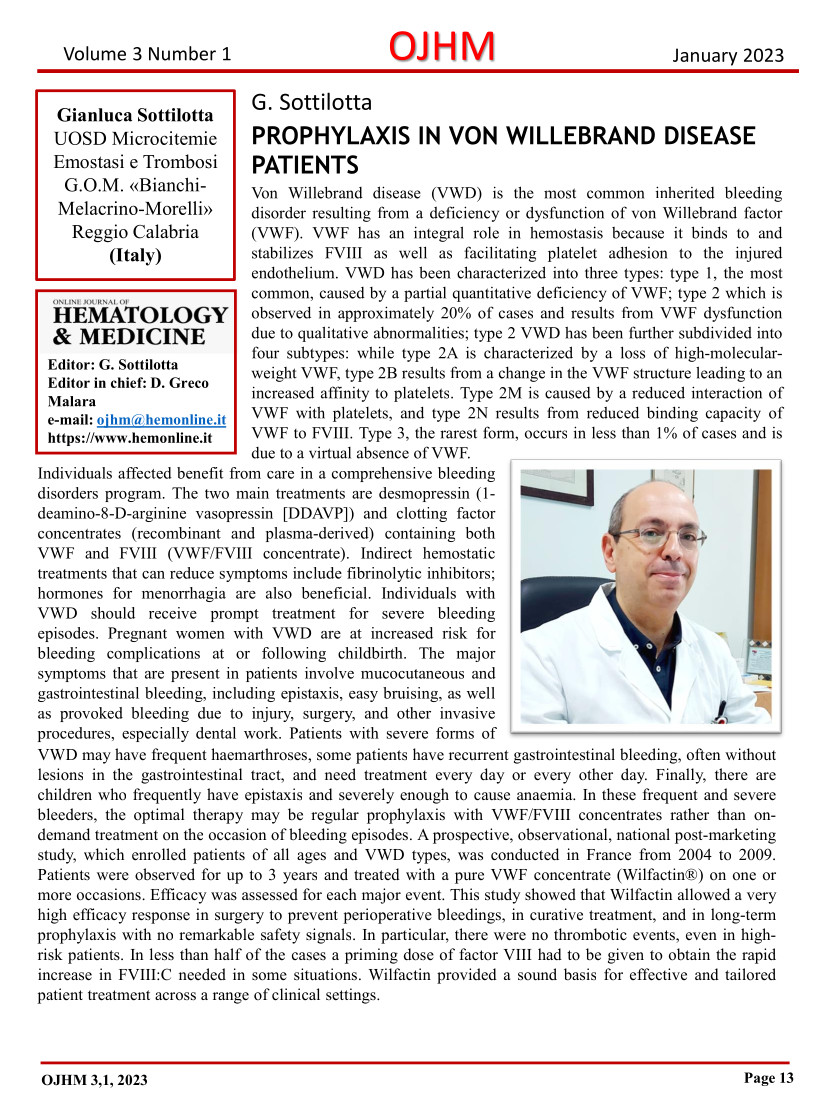G. Sottilotta
Abstract
Von Willebrand disease (VWD) is the most common inherited bleeding disorder resulting from a deficiency or dysfunction of von Willebrand factor (VWF). VWF has an integral role in hemostasis because it binds to and stabilizes FVIII as well as facilitating platelet adhesion to the injured endothelium. VWD has been characterized into three types: type 1, the most
common, caused by a partial quantitative deficiency of VWF; type 2 which is observed in approximately 20% of cases and results from VWF dysfunction due to qualitative abnormalities; type 2 VWD has been further subdivided into four subtypes: while type 2A is characterized by a loss of high-molecular weight VWF, type 2B results from a change in the VWF structure leading to an increased affinity to platelets.
Type 2M is caused by a reduced interaction of VWF with platelets, and type 2N results from reduced binding capacity of
VWF to FVIII. Type 3, the rarest form, occurs in less than 1% of cases and is due to a virtual absence of VWF. Individuals affected benefit from care in a comprehensive bleeding disorders program. The two main treatments are desmopressin (1-deamino-8-D-arginine vasopressin [DDAVP]) and clotting factor concentrates (recombinant and plasma derived) containing both VWF and FVIII (VWF/FVIII concentrate)...
(»Download here full PDF version)


